When to Replace Your Wood Stove 2024
- September 27, 2023
- 3 comment
A wood stove, for many, is not just a heating appliance; it’s a centerpiece of the home, a nod to a simpler time, and a symbol of cozy, rustic comfort. But like all things, it has a lifespan. Understanding when to replace your wood stove can be the difference between a warm winter evening and a cold surprise. Here’s a detailed guide that ensures your home remains a haven of warmth and safety.
When to Replace Your Wood Stove List:
- Age of the Stove
- Physical Damage
- Decreased Efficiency
- Outdated Technology
- Safety Concerns
- Frequent Repairs
- Aesthetic Wear and Tear
- New Home, New Stove?
Now, let’s delve into the essential factors to consider when deciding whether it’s time to replace your wood stove.
1. Age of the Stove

Most wood stoves have a grace period of 15-20 years, which varies based on factors like the brand, usage frequency, and maintenance levels. As your stove approaches this age threshold, it becomes imperative to gauge its functionality, ensuring that its age doesn’t compromise your home’s warmth.
2. Physical Damage
Routine inspections can be your best defense against unexpected surprises:
Cracks
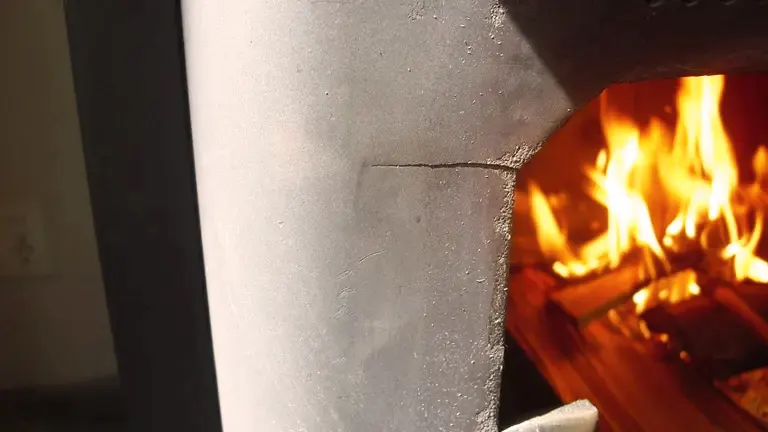
Small cracks in a wood stove may appear harmless at first, but they can develop into significant problems over time. These minor breaches can compromise the stove’s efficiency by allowing excess air to enter and affect the combustion process. Furthermore, these cracks can become potential fire hazards, allowing sparks and embers to escape and posing a risk to nearby flammable materials. Overlooking such cracks can jeopardize both the functionality of the stove and the safety of one’s home, underscoring the importance of routine inspections and timely repairs.
Preventing Small Cracks in Wood Stoves
Maintaining the integrity of a wood stove is crucial for its efficiency and safety. Here’s a guide on how to prevent the onset and progression of cracks:
- Quality Matters: Invest in a high-quality stove. While more expensive upfront, it’s more resilient against cracking and other wear and tear in the long run.
- Regular Inspection: Commit to routine check-ups. Look for early signs of stress or minor cracks. Early detection makes mitigation easier.
- Avoid Rapid Temperature Changes: Drastic changes in temperature can cause the metal to expand and contract quickly, leading to cracks. When lighting your stove, gradually build up the fire rather than creating a large blaze immediately. Similarly, avoid throwing cold water on a hot stove.
- Use Seasoned Wood: Fresh or wet wood creates more creosote and can cause uneven burning, leading to hot spots in the stove which can cause or exacerbate cracks. Always use dry, seasoned wood.
- Maintain Appropriate Distances: Ensure combustible materials like curtains, furniture, or rugs are kept at a safe distance from the stove. Excess heat on one side of the stove due to nearby materials can lead to warping and cracking.
- Avoid Overloading: While it might be tempting to stuff the stove full to get a longer burn, overloading can produce excessive heat, increasing the risk of cracks.
- Monitor Stove’s Temperature: Use a stove thermometer to keep an eye on the temperature. This helps in ensuring the stove is operating within safe limits.
- Replace Worn Out Parts: Parts like the baffle or firebricks help distribute heat evenly inside the stove. If they become damaged or worn out, replace them promptly to prevent hot spots and undue stress on the stove’s walls.
- Use a Protective Lining: Many modern stoves come with a protective lining or firebrick inside. These not only improve efficiency but also act as a protective layer against intense heat and flames, thereby reducing the risk of cracks.
Warped Metal or Broken Parts
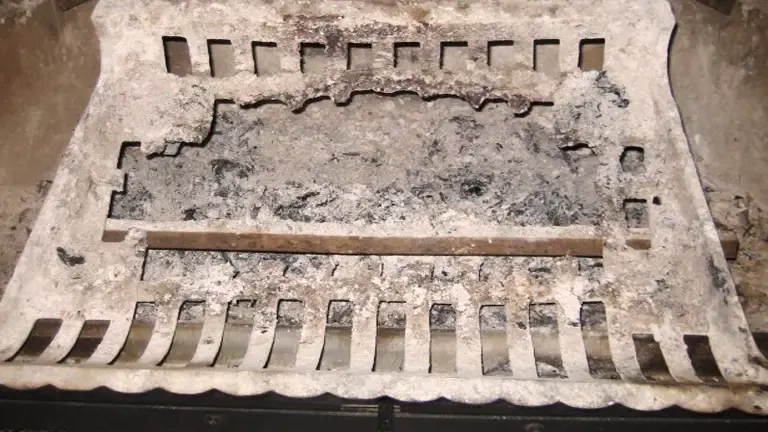
Over time, the consistent and intense heat to which a wood stove is subjected can cause the metal to warp or deform. This distortion, along with any other damaged or broken parts, can significantly hamper the stove’s efficiency and overall performance. It’s crucial to routinely check for such issues to ensure the stove remains both effective and safe for use.
Rusty or Eroded Interiors
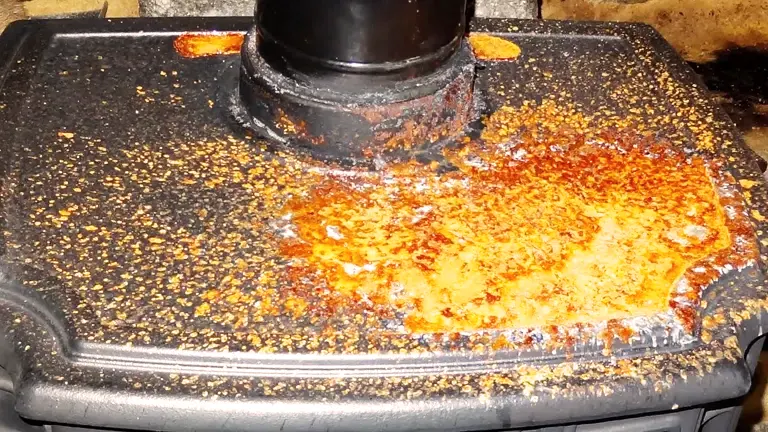
The interior of a wood stove is susceptible to rust and erosion, especially if not properly maintained. This rust, while seemingly unobtrusive, gradually weakens the stove’s structure and compromises its safety. Furthermore, an eroded interior can affect the efficiency with which the stove burns wood, leading to uneven heating and wasted fuel. Regular inspections and cleanings can help mitigate these issues, ensuring the stove remains both reliable and effective.
Cleaning and Preventing Rust or Erosion in Wood Stoves
To ensure the longevity and efficiency of your wood stove, you need to keep rust and erosion at bay.
Cleaning Rust:
- Safety First: Ensure the stove is cool and hasn’t been used recently.
- Brush Away Loose Rust: Using a wire brush or steel wool, gently scrub away any loose rust from the affected areas.
- Cleaning Solution: Mix equal parts white vinegar and water in a spray bottle. Spray the mixture onto the rusted area and let it sit for a few hours. This will help loosen the rust.
- Scrub Again: After allowing the vinegar solution to sit, scrub the area again with steel wool or a wire brush.
- Wipe Down: Using a clean cloth, wipe away any residue.
- Dry: Ensure the stove is completely dry. You can use a cloth or let it air dry.
- Protective Coating: Apply a thin layer of high-temperature stove paint or polish. This can prevent future rusting.
Preventing Rust and Erosion:
- Maintain Dryness: Always keep the interior of your stove dry. If you’ve cleaned it, ensure it’s dried thoroughly.
- Use Dry Wood: Wet or green wood can increase the moisture inside your stove, making it more prone to rust. Always use seasoned, dry wood.
- Regular Inspections: Frequently inspect your stove for signs of moisture or initial rust spots. Catching and addressing them early can prevent more extensive damage.
- Protect from External Moisture: Ensure that the room where the stove is placed is free from dampness. Using a dehumidifier can help in especially humid areas.
- Apply Protective Measures: Using high-temperature stove paint or polish not only gives your stove a new, clean appearance but also provides a protective layer against moisture and rust.
- Regular Cleaning: At least once a season, give your stove a thorough cleaning to remove any ash, soot, or residues that might hold moisture against the metal.
3. Decreased Efficiency

As wood stoves age or sustain damage, their efficiency can diminish. This can manifest in several ways, most notably through increased wood consumption. If you find yourself frequently restocking the stove but still feeling a chill in your home, it’s a clear sign that the stove’s performance is waning. The underlying reasons could range from degraded components, compromised seals allowing heat to escape, or airflow problems affecting combustion. Inefficient burning not only consumes more fuel but also results in suboptimal heat output. This inefficiency can add up over time, leading to higher heating costs, more frequent wood purchases, and a less comfortable living environment. It’s essential to address these issues promptly, whether through repairs or considering a replacement, to restore warmth and cost-effectiveness to your heating system.
4. Outdated Technology
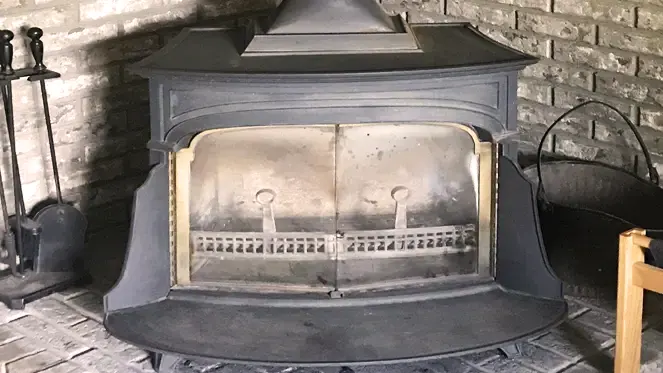
The world of stove technology has come a long way in recent years. Contemporary models are meticulously designed for a cleaner and more efficient burn, ensuring optimal utilization of wood. Sticking with an older, outdated stove means missing out on these advancements. Upgrading to a modern stove not only ensures you’re maximizing the potential of your fuel but also plays a crucial role in environmental conservation. By producing fewer emissions and using wood more effectively, these stoves decrease both indoor air pollution and the overall environmental impact. Transitioning to the latest technology can, therefore, be a significant step towards a more sustainable and efficient heating solution for your home.
5. Safety Concerns
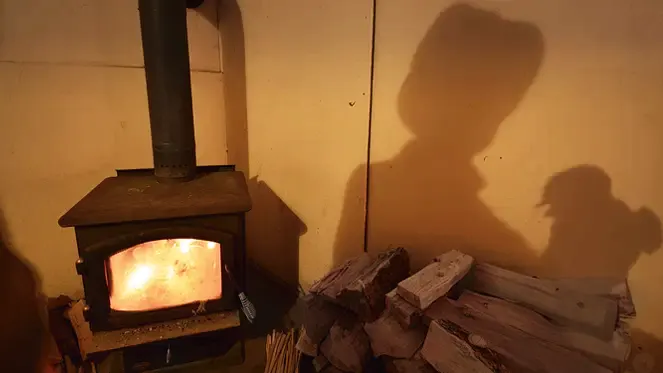
Using older, legacy stoves presents a unique set of challenges, chief among them being that they often don’t adhere to modern safety standards. When you inherit or retain an age-old stove in your home, you potentially expose yourself to risks that modern users bypass. As technology has advanced, so have the safety features of wood stoves. Today’s models are integrated with detailed air intake systems to regulate combustion, robust door seals to prevent inadvertent leaks, and firebox designs that optimize burn patterns, reducing the risks of overheating or errant sparks. Thus, switching to a more recent model is not just about leveraging technological benefits; it’s fundamentally about ensuring the safety of your household.
6. Frequent Repairs
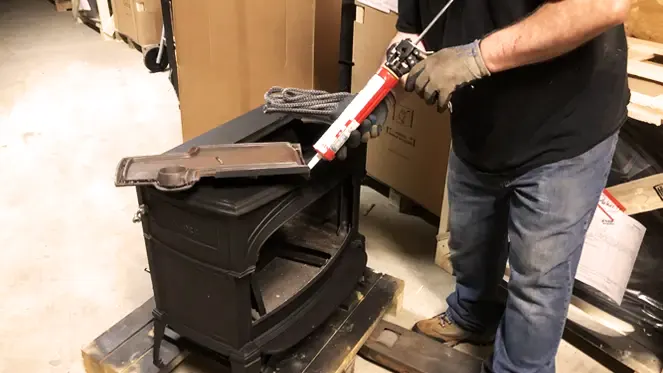
When your wood stove starts to exhibit consistent issues, necessitating regular repair calls, it’s a clear indication that its performance is waning. These continuous breakdowns and the subsequent technician visits can be both disruptive and costly. Over time, these repair costs can accumulate, making the stove more expensive to maintain than to replace. Investing in a new stove can not only eliminate these recurring problems but also offer a modern, efficient, and ultimately more economical alternative, saving you both time and money in the long haul.
7. Aesthetic Wear and Tear
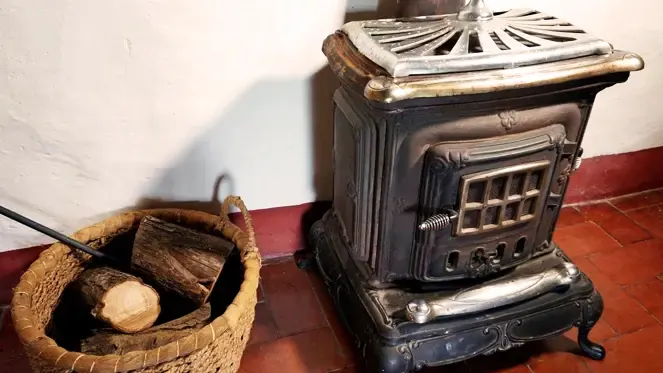
A wood stove, while primarily a functional appliance, also contributes significantly to the ambiance of a room. Over time, as it endures countless burns and the accompanying wear and tear, its appearance can deteriorate. Scratches, faded paint, and outdated designs can make it stand out for the wrong reasons. When your stove begins to look more like a relic of the past rather than a centerpiece, it could be signaling the need for an upgrade. Opting for a contemporary model can rejuvenate your living area, ensuring that the stove complements and enhances your home’s current aesthetic.
8. New Home, New Stove?
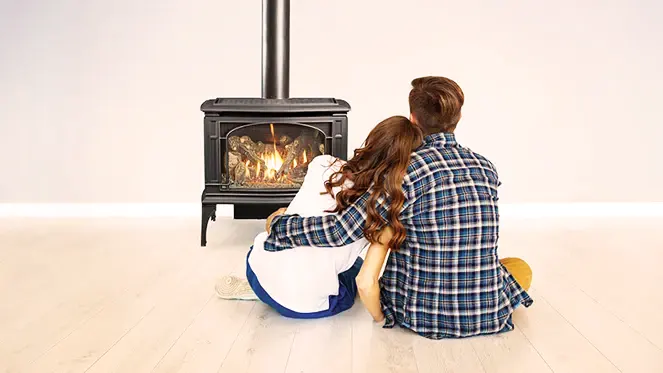
Every major change in life, such as moving to a new residence or undertaking significant home renovations, presents an opportunity to reassess and refine our living spaces. The wood stove, a focal point in many homes, is no exception. Your current stove might not match the new home’s size, fail to meet the heating requirements of a larger area, or simply clash with a freshly chosen interior design. In such scenarios, acquiring a new stove becomes more than just a luxury; it’s a strategic decision to ensure both the efficiency and aesthetic harmony of your rejuvenated environment.
What’s Next?
If you’re leaning towards a replacement, do your research:
- Size Matters: Ensure the new stove is adequately sized for your space. Too big, and you’ll waste fuel. Too small, and you won’t get the warmth you need.
- Emissions and Environment: Look for EPA-certified stoves. These are tested for efficiency and emissions, ensuring you get a product that’s kind to both your wallet and the planet.
- Installation: Always get a professional to install your stove. Proper installation is crucial for safety and efficiency.
Explore our article to discover superior replacements for your wood stove here! Choosing a Wood Stove 2023
In Conclusion
The decision to replace a wood stove isn’t merely functional. It’s about preserving the soulful essence of a space, where the dance of flames mirrors the warmth of shared moments. Being vigilant and proactive ensures that this heart of the home beats strong, keeping chilly nights at bay, and safety within arm’s reach.
FAQs
- Is there a “shelf-life” for wood stoves even if they appear undamaged?
While wood stoves don’t have an expiration date, most have an effective lifespan of around 15-20 years. Over time, even with little visible damage, internal components can degrade, affecting efficiency and safety. - Can small cracks in my wood stove be repaired or should the stove be replaced?
Small cracks can sometimes be repaired. However, they often indicate structural weakness, and repairs may only be temporary solutions. It’s best to consult with a professional about the severity and whether a replacement is more apt. - Are modern stoves really more efficient than my old, trusty ones?
Absolutely! Advancements in technology mean that today’s stoves burn wood more completely and cleanly, extracting more heat from each log and producing fewer emissions. - I’ve seen people use old stoves outdoors. Is this a safe way to repurpose them?
Using old stoves outdoors for purposes like campfires or cookouts can be done, but safety precautions are paramount. Ensure it’s placed away from flammable materials and always monitor it when in use. Still, if it had safety issues indoors, it’s best not to use it outdoors either. - How can I tell if my stove is EPA-certified?
EPA-certified stoves will have a label on the back, indicating their certification status and providing emission information. If you’re unsure, you can also check the manufacturer’s website or contact them directly. - Will upgrading to a newer model increase my property value?
While the primary reason to upgrade is efficiency and safety, a modern wood stove can enhance the aesthetic appeal of a home and potentially increase its property value, especially in colder regions where wood stoves are sought-after features. - Do new stoves require less maintenance than older models?
While newer models boast advanced features and efficiencies, all wood stoves require regular maintenance. However, the frequency and extent of repairs might be reduced with newer models due to improved design and technology. - I’m emotionally attached to my old stove. Can I keep it as a decorative piece after replacing it?
Certainly! If you’ve formed an emotional bond with your old stove, you can repurpose it as a decorative or nostalgic piece in your home. Just ensure all fire and safety hazards are eliminated if you’re not using it for burning. - How do I responsibly dispose of my old wood stove?
Contact local recycling centers or scrap metal yards. Some places even have wood stove recycling programs, which ensure that stoves are disposed of or repurposed in an environmentally friendly manner. - Is it more cost-effective to keep repairing my old stove or to buy a new one?
While minor repairs can prolong the life of your stove, frequent breakdowns might indicate it’s on its last legs. Crunch the numbers: if repair costs approach or exceed the cost of a new, efficient model, it’s time for an upgrade.
As the chilly winds of 2024 approach, our goal is not just to inform but to spark a conversation around the heart of your home – the wood stove. Your experiences, insights, and questions enrich our collective understanding. Have you faced dilemmas with your aging stove? Perhaps you’ve recently made the switch to a newer model? Whatever your story, we’re eager to hear it. The essence of warmth is not just in burning wood but in the shared stories that emanate from its glow. Dive into the comments below, share your thoughts, and let’s keep the conversation burning as vibrantly as the logs in a brand-new wood stove.

David Murray
Forestry AuthorI'm David Murry, a forestry equipment specialist with a focus on chainsaw operation. With over 13 years of experience, I've honed my skills in operating and maintaining a wide range of machinery, from chainsaws to log splitters. My passion for the outdoors and commitment to sustainable forestry drive my work, which emphasizes safety, efficiency, and staying updated with industry advancements. Additionally, I'm dedicated to sharing my expertise and promoting environmental awareness within the forestry community.
3 comments
Is there any environmental benefit to burning kiln dried Logs’s as opposed to fully seasoned and log stored hardwood at typically 12/15% moisture, assuming the kilns are gas or oil fired anyway?
Billyt
September 28, 2023 4:45 pmNow we know that the government will ban Wood burning can we switch to smokeless fuel



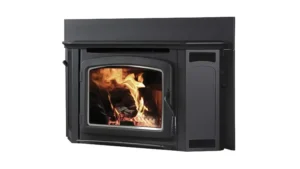
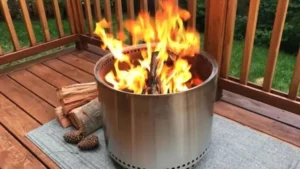

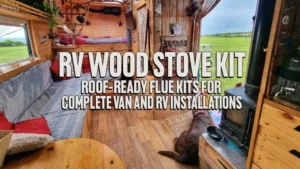


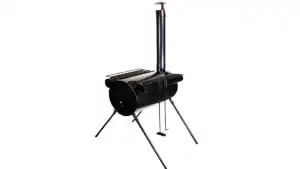
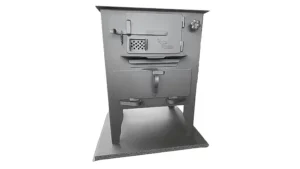


Where is the best place in Torbay to buy a new woodburner
Christine calder
October 5, 2023 7:22 am